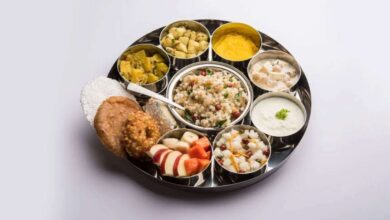Six Crucial Things Travelers Should Know Before Visiting Nagpur
6 Things You Should Know Before Going to Nagpur
Nagpur, a cosmopolitan city in the geographical and cultural center of India, is endowed with a wealth of natural resources, from rich oranges to lush wildlife preserves, as well as historically significant buildings from imperial legacies and vibrant cultural tapestries created by communities that have come together over the years.

Here is a useful guide to help you plan your trips to Nagpur, where you can explore history, wildlife, and urban life. It covers must-see sites, delicious food to try, weather insights, transportation alternatives, and more to make your trip absolutely unforgettable.
1. The Well-Known Orange Capital
Nicknamed “Orange City,” Nagpur has perpetual reputation because to its enormous orchards that produce luscious orange varieties, including Sathgudis, Navals, and Nagpur Mandarins. These crops were introduced by the British, and the surrounding tropical heat and black, rich cotton soil foster their growth.
The best time to harvest is from November to February, when trees are awash with vivid orange fruit set against a backdrop of verdant greenery. Take advantage of orchard excursions, choose your own fruit, and savor orange delights like spicy Zunkas or sweet Santra Barfis.
During the Nagpur Orange Festival, which includes concerts, fairs, and food booths selling orange pastries, squash, wines, and other unusually flavored foods that inventive cooks are always creating, the city celebrates its abundance of oranges! Remember to purchase crates of the fruit, which is high in vitamin C, from which the locals extract juices, pickles, cosmetics, and even utilize the skins ceremoniously.
2. Natural History In The Heart of Sanctuaries
Past apple orchards, the terrain opens out into tiger country, with a number of sanctuaries protecting abundant flora and animals that are readily reached from Nagpur by safari.
With approximately 500 square kilometers of tropical forests and lakes, the Tadoba Andhari Tiger Reserve is well known across the world for having one of the greatest populations of Royal Bengal Tigers. Along with unique birds, safari trips also expose leopards, sloth bears, gaurs, and striped hyenas. Once the monsoon season has passed and the wildlife is more evident near watering holes, return.
Pench Tiger Reserve stretches over the areas to the north that are partially depicted in Rudyard Kipling’s well-known “Jungle Book.” Here, jeep trips through deciduous forests provide views of Pench’s much-loved Collarwali Tigress and Indian jackals next to bee eaters or barbets displaying their vibrant colors. Wildlife education is provided via the Interpretation Center.
3. Holy Places and Historic Buildings
Beyond the city’s colorful surroundings, Nagpur’s priceless past is revealed via sites like colonial buildings and places of worship that tell stories about the city’s culture.
At Deekshabhoomi, a significant socio-religious location, Dr. Babasaheb Ambedkar oversaw large-scale conversion rituals in 1956, leading over 3 lakh followers to renounce casteist Hinduism in favor of egalitarian Buddhism. The location is marked with monuments, meditation cells, viharas, and stupas.
The arsenal, manuscripts, and miniature paintings honoring the triumphs and advancements of the local dynasty during that era are conserved at the museum housed inside the Gond Kings’ Ahilyabai Holkar Fort from the 18th century.Along with the graceful golden Christ Church Cathedral with magnificent glassworks, don’t miss seeing the medieval Futala Devi and Telangkhedi Hanuman temples referenced in ancient Banasur legend texts.
4. Tasty Regional Recipes
After seeing the city’s attractions, treat your taste buds to Nagpur’s flavorful cuisine, which combines products from nearby farms with the customs of several communities:
Begin your day with the hot upma variety or Kanda Pohe, which has been gently sweetened with jaggery. Served with fried chilies, usual. Lunch menus include dishes like bamboo shoot curries, mutton sukka, and the famous Varhadi Chicken from Maharashtra, along with bhakris, which are puffy flatbreads cooked in clay ovens.
Evenings are spent preparing festive snacks in bakeries and homes. Some favorites include the Haladi Kardhi, which is steamed chickpea dumplings dipped in tangy curds tempered with spices, or the Samosa, a popular dish from Nagpur that is filled with flavorful masalas and green peas and served hot with tamarind chutneys that will tantalise your taste buds.
Before sinking into food comas till daybreak, indulge in some creamy Kalakand fudge or Orange Barfi as a sweet consolation after your feast!
5. A Living Legacy of Handicrafts
Beyond its signature oranges, Nagpur is well-known for its specialty handicrafts, which have been produced throughout the years for both cultural and practical uses by the many ethnicities who have lived here:
Colorful bamboo crafts with intricate weaving have their origins in the use of readily accessible materials by forest-dwelling cultures for baskets, mats, furniture, and other purposes. These crafts developed into a thriving art form over many years. Warli paintings, on the other hand, use their distinctive earthy colors and cryptic pictographs to portray tribal life.
The rusted silver jewelry, leather mojdis, and Banjara tribal block prints are examples of traditional design aesthetics that have been handed down through the ages. The gold zari-woven designs on Awadhi handpainted silk Paithani sarees continue to make them highly sought-after.Shops in the Chitar Oli neighbourhood may be found displaying these traditional handicrafts with contemporary clothing for everyday use that showcases the artistic diversity of Vidarbha artisans.
6. Transportation to and from Nagpur
Nagpur has easy access to well-established transportation networks:
Excellent connection are available between the Middle East and Southeast Asia via the Dr. Babasaheb Ambedkar International Airport on both local and international flights. Travel is made easier with over five railway stations that link to holy towns and major cities like Delhi, Hyderabad, Kolkata, and Mumbai. Luxurious busses go regionally and overnight to Goa, MP.
Convenient solutions for local commuting include online taxi services, city buses, metros, autorickshaws, and rental urban bikes. In comparison, the roads are wider and less crowded. The harsh temperatures persist, so dress appropriately for the weather.
There are lots of lodging options, with midrange establishments grouped in the center zones. Before confirming, examine the regulations regarding meal plans, early check-ins, and wi-fi.Nagpur is a friendly city that offers a variety of activities, including thrilling animal encounters, delicious modern fusion cuisine, and ancient marvels. Let yourself go and explore the amazing ethos that is Incredible India’s core.







